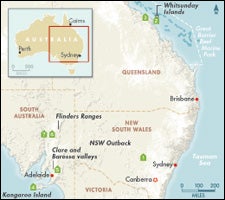Australia is a land of optimists. I know this because a couple of months ago I was riding shotgun in a tiny bush plane, the cockpit barely bigger than the inside of a Mini. The pilot, Ian Fargher, was flying us from his sheep station in the Flinders Ranges to Adelaide, the capital of South Australia. Below us, mountains tilted at lopsided angles and the scrub-covered earth was alive with kangaroos. True outback, as advertised. As we hummed southward in his 1969 SkyHawk II CessnaÔÇöa glorified gnat, with a single tinny propellerÔÇöFargher glanced over at me, took his hands off the yoke, and said with uplifting confidence, “OK, you’re flying now.”
Australia
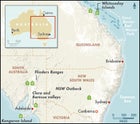 Sjissmo Rasniki
Sjissmo RasnikiThis was toward the end of my ten-day visit, and I’d learned a thing or two by then. Namely, that when you’re thousands of miles from home, across oceans and time zones, on a three-million-square-mile landmass that’s almost entirely engulfed by desert, it helps to have a sense of humor. I’d also seen that in Australia, a story well told trumps the mundane truth any day. Believe me when I tell you that I piloted that plane all the way to Adelaide.
As a country, a continent, and an island unto itself, Australia is a land of bizarre extremesÔÇöfrom desolate desert to tropical rainforest and stunning coastline. It’s also home to some of the most exotic native wildlife you’ll find anywhere: pogo-sticking ‘roos, docile koalas, andÔÇöif you happen to be driving through Flinders Ranges National Park at duskÔÇöleggy emus as ubiquitous as deer in New England. Roughly the size of the lower 48, with a population of 21 million (slightly less than that of Texas), Oz is a vast expanse of natural thrills and a freak show of brag-worthy fauna.
Australia’s outback and its wildlife have always been a draw, but until recently the country lacked a critical mass of luxurious bush camps and guide services to deliver a true safari experience. Now, with the arrival of several small, chic lodges on its farthest fringes, Australia is becoming a Down Under version of Africa, where it’s possible to buzz via bush plane from one hideout to the next, immersing yourself in the wilds without sacrificing comfort or style. The best thing about Australia, of course, is the locals: relentlessly upbeat, unpretentious, and always game for adventure (however dubious). Chat up your hosts at any of the new outposts and next thing you know you’ll be tagging along on a sheep-mustering mission or helping push a bush plane out of a garage.
Late last fall, I flew to Australia to experience the country’s emerging safari culture for myself, charting a course that focused on the northeast coast and the Great Barrier Reef, the outback just outside of Sydney, and the coast and interior of South Australia. I flew in helicopters and bush planes (once with a baby-faced pilot who looked barely old enough to drive, let alone navigate safely through a gale), slipped into a contented, kangaroo-induced daze in the front seat of a Land Cruiser, and negotiated that most loathsome of driving challenges, the traffic circleÔÇöfrom the left side of the roadÔÇöbehind the wheel of an electric buggy.
In Queensland’s Whitsunday Islands, a 19-year-old skipper named Jack, with jumbo gold Ray-Bans and salty-blond dreadlocks, tacked our catamaran back and forth across a whitecapped bay. Soon, however, a motorboat approached and Jack shoved the tiller toward me. “Here’s my ride,” he said as he hopped into the dinghy and left me alone to sail. Over his shoulder, he reassured me in the most Aussie of ways: “You’ll be right.”
Australians’ laid-back joie de vivre is an adaptive trait: The austral sun is too bright, the air too clear, and the horizon too wide and possibility-full to harbor prolonged pessimism. This, after all, is the oldest continent, a stalwart relic that’s been there, done that a thousand times over but refuses to be fazed. Outdoor-loving Aussies aren’t discouraged by the fact that some of the world’s most venomous snakes slither through these parts or that the oceans’ creepiest agent of torture, the box jellyfish, patrols the Coral SeaÔÇöan army of killers the unflappable locals simply call “bities.”
Over breakfast one day at Burrawang West Station, property manager Doug Loeb and I got to talking critters. A former marketing executive from Sydney, Loeb, 39, epitomizes Australia’s sunny, can-do ethos: By day, he’s a sunburned cowboy in a shearling vest and dusty boots; by night, you’ll find him in his chef’s whites, preparing gourmet lamb shanks. That morning, before a hike along Goobang Creek, I grilled Loeb about protocol should I trip over a stick that was actually a death adder lying in wait. “Oh, no worries,” he said. “It’ll hear you coming and get out of your way.”
But if it didn’t? I could always do what a local rancher did when he was bitten in the bush, Loeb suggested: Lie absolutely still on the ground for 12 hours, to keep the venom from pumping to my heart and killing me on the spot. That seemed as likely as, well, flying my own plane, but Loeb was grinning so assuredly, I couldn’t help but believe him.
New South Wales Outback
Urban Escape
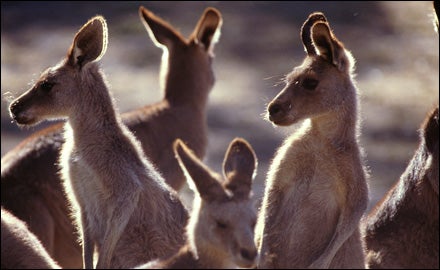
In Through the Outback
Give yourself at least ten days to tour eastern Australia, with a stop in Sydney before you head into the bush. A three-hour guided ascent of the 440-foot-high Sydney Harbor Bridge, overlooking the Opera House, is arguably the world’s best cure for jet lag (from $159; ). Crib from this itinerary for the best mix of stylish resorts and true adventure. Or book your own custom safari with Uncharted Outposts, a U.S.-based outfitter that specializes in high-end independent travel ().From Sydney, your closest outback fix begins near Parkes, a farming town of 14,000 in the rolling, silo-studded wheat-and-sheep country of New South Wales. Seven years of drought have turned the fields tawny, but this is still considered the “green outback”ÔÇöa lusher, more temperate version of Australia’s arid center. For the most part, tourist amenities are sparseÔÇöas are residents, save the weathered cowboys and bush poets who’ve been working these sheep stations for generations.
WHERE TO STAY: Burrawang West Station is a privately owned cattle ranch on 12,000 acres of rambling pastureland. Built in 1993 as a corporate retreat, the compoundÔÇöpurchased in 2000 by Sydney entrepreneur Graham Pickles and his wife, JanaÔÇöhas six wood-planked guest cottages, each with a private screened porch and a marble bath. The main homestead houses an impressive Australian art collection, including Aboriginal bark paintings and contemporary metal sculpture (from $685 per person per night; ).
WHAT TO DO: Head out for the day on four-wheeler “quad” bikes to help herd cattle or check on newborn lambs, cruise the ranch roads on a mountain bike, or paddle a kayak down Goobang Creek, which winds through the property. Also on site: a pool, archery, two grass tennis courts, and an indoor sauna.
GETTING THERE: Burrawang is a five-hour drive west of Sydney or a 45-minute hop by plane. Fly commercial into Parkes via Regional Express ($200 round-trip; ) or charter a bush flight from Sydney to the station’s dirt airstrip (from $3,000 for four passengers; ).
The Whitsunday Islands
Ocean Paradise
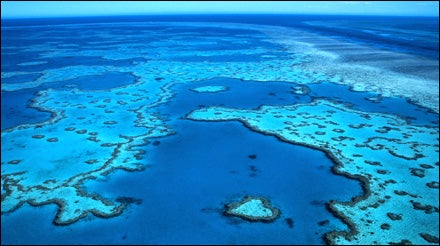
Fly Right
In addition to major U.S. carriers, Australia’s national airline, Qantas, flies the 14-hour route to Sydney from Los Angeles two or three times daily; the Qantas Aussie AirPass includes round-trip international airfare and three domestic flights, from $1,099 (). Apply for an electronic tourist visa online before you go ($18; )This chain of 74 lush isles off Queensland’s central coast makes a gorgeous base camp for exploring the Great Barrier Reef. Though the coral’s a bit farther offshore hereÔÇö35 miles east of the resort center of Hamilton IslandÔÇöthan it is farther north, in bustling Cairns, the southern reef sees fewer crowds. And with protected anchorages and short crossings, the Whitsundays are a mecca for sailing.
WHERE TO STAY: From the open-air lounge at Qualia, a serene five-star resort that opened on Hamilton Island’s secluded northern tip in September, you’ll have unobstructed views of still-wild Whitsunday Island. The 60 guest “pavilions” are equally stunning: Each 1,292-square-foot room overlooks the water, with a private plunge pool, terrace, plasma TV, and cavernous slate bath (doubles from $1,264; ). The cuisineÔÇöincluding fresh-caught scallops prepared by a French chefÔÇöis just as indulgent.
WHAT TO DO: Take a scenic, 35-minute helicopter flight to the Great Barrier Reef ($631; ) and snorkel with the resident “reef rats”ÔÇöbarefoot dive masters who live on pontoons permanently stationed on the reef. Back at Qualia, you can skipper a catamaran, play bocce by the pool, paddle a sit-on-top kayak, or hop into a four-seat “buggy” (an electric golf cart) to explore the 15-mile network of dirt trails that loops around Hamilton Island. Or consider a week of sailing in the Whitsundays (bareboat charters from $2,884 per week; ) before retreating to Woodwark Bay, a stunning, 4,000-acre retreat on the mainland. The entire resort, which features seven high-end thatch-roofed huts, rents to just one party of two to 14 guests each night (from $685 per person for a group of 14, including meals; ).╠ř
GETTING THERE: Jetstar and Qantas fly daily from Sydney to Hamilton Island (about $320 round-trip; ).
Kangaroo Island
Safari Central
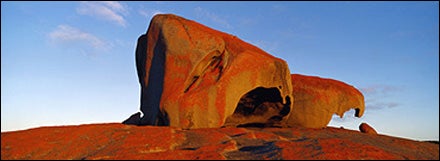
Eighty miles across the Gulf St. Vincent from Adelaide sits Kangaroo Island, 1,700 square miles of rolling terrain crowded with wildlife. The isle’s namesake thrives in the brushy interior, and the southern coastline shelters fur seals, fairy penguins, and sea lions. But it’s koalas that rule: Since being introduced from the mainland in 1928, the marsupial’s population has boomed to 30,000 on KI, giving it some of the highest koala densities in the country.
WHERE TO STAY: When the Southern Ocean Lodge opens for business on a craggy south-shore bluff in early March, the mod, 21-suite eco-retreatÔÇöconstructed with materials such as local limestone and recycled timberÔÇöwill put the island on the international luxury map. The lodge has a refined, edge-of-the earth feel, with nothing but 2,500 miles of ocean between you and Antarctica (doubles from $1,595, including all meals and local guiding; ).
WHAT TO DO: Your best authority on all things KI is naturalist Craig Wickham (), who’s been running wildlife safaris for 18 years. Craig and his team will lead you through Kelly Hill Conservation Park, a swath of grassland that’s literally hopping with kangaroos; on a ten-mile hike along Cape Gantheaume; or on a koala-tracking trip through the eucalyptus groves of Flinders Chase National Park.
GETTING THERE: It’s a 20-minute flight from Adelaide to Kingscote, Kangaroo Island, via Regional Express ($141 round-trip; ). Air South operates a four-passenger charter from $1,320 ().
Clare and Barossa Valleys
South Australia’s Wine Country
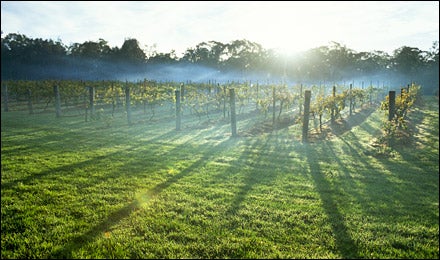
Wake up to row after row of grapevines backlit by the sun and you’ll be forgiven for thinking you’re in Northern California. The epicenter of Australian viticulture sits squarely in the Clare and Barossa valleys (twin appellations, like Napa and Sonoma), a couple of hours north of Adelaide. With gently undulating vineyards, wooded hills breaking the horizon, and fields covered with purple wildflowers, the terrain is idyllic, and the lifestyle is just as sublime: weekly farmers’ markets; tiny villages, each with their own butcher, baker, and winemaker; and between them, more than 100 “cellar doors,” or tasting rooms.
WHERE TO STAY: In the Barossa Valley, the Louise is a newly renovated Tuscan-style inn with private courtyards and the region’s most celebrated restaurantÔÇöits menu, featuring Barossa corn-fed chicken and steamed asparagus, is sourced almost entirely from local farmers (doubles from $280; ).
WHAT TO DO: Sample the region’s estate wines at Loan, one of the valley’s only organic winemakers; Two Hands’ shiraz cellar; and internationally acclaimed Penfolds, just three miles up the road from the Louise. The 745-mile Heysen Trail climbs the east flank of the Eden Valley on its way from the Southern Ocean to the Flinders Ranges. Ask the chef at the inn to pack a picnic, then hike a section of the trail for breakfast with the kangaroos. In the Clare Valley, the gravel Riesling Trail loops for 15 miles past dozens of cellar doors, including Sevenhill, run by Jesuit priests since 1851. Rent a bike from Cogwebs, at the trail’s start in Auburn, and taste as you ride (full day, $35; ).
GETTING THERE: Rent a car in Adelaide for the two-hour drive.
Flinders Ranges
Authentic Outback
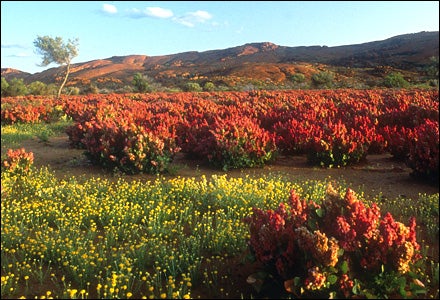
How do you know you’ve landed in quintessential Aussie outback? The quickest way from A to B is by bush plane, the ‘roos and emus outnumber the humans, and the flying doctors drop onto the local airstrip once a month. Some 120 miles north of Adelaide, the vineyards and wheat fields give way to dusty, rolling sheep country, backed by the sandstone peaks of the Flinders Ranges.
WHERE TO STAY: Angorichina Station is a sprawling sheep property run by fourth-generation homesteader Ian Fargher and his wife, Di. There are just two guest rooms in the low-slung ranch house, and meals are taken family style on the terrace, overlooking a tennis court and the wool shed, so you’ll feel at home right away (doubles from $1,196, including all meals and activities; ).
WHAT TO DO: Don’t come with any hard-and-fast agenda because it won’t compare to what Ian will dream up: wandering down to the wool shed to watch the sheep shearing, walking with the kelpies (Aussie sheepdogs) to scout for eagles’ nests, four-wheeling to the top of Carey Hill for sundowners, tracking the skittish yellow-footed rock wallaby in Flinders Ranges National Park, or buzzing the 213-square-mile property in Ian’s Cessna while he rounds up sheep or checks his wells. But the highlight of any visit to Ango is a ten-minute bush flight to the Prairie Hotel, in tiny Parachilna, for lunch. The 100-year-old hotel and pub, run by Ross and Jane Fargher (Ian’s brother and Di’s sister), is an oasis of outback style, with gourmet ‘roo burgers in the dining room, Aboriginal art on the walls, andÔÇöof courseÔÇöa dirt runway out back.
GETTING THERE: Angorachina is a six-hour drive from AdelaideÔÇöor Ian will fly you from the city and back in his Cessna ($1,796 for up to two passengers).


